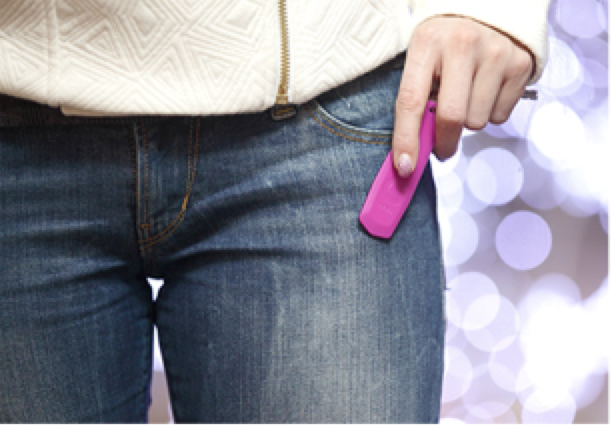
This week I discovered Physical Cookies. And I fell in love.
What Are Physical Cookies?
Think about how digital cookies follow you across the internet, collecting your usage data. It’s bringing the digital cookie to life in the real-world with a tiny piece of technology that collects usage data, not personal data, on the individual who is wearing it. It’s a tiny keychain at the moment and all you have to do as a user is pick one up and stick it in your pocket.
It’s described by the manufacturers perfectly: “The electronic readers placed in-store are able to read your Physical Cookie key-chains and collect the usage data. The system analyses individually collected data from every cookie in real-time. The cookies then use in-store digital screens to show advertisements and offers based on the data. The targeted messages adapt to possible changes in customer behaviour.”
Isn’t It A Beacon?
Actually, no it’s not. You see beacons rely on push-messaging. The Physical Cookie actually uses passive messaging matched to your needs and interests – based on real activity that you’ve undertaken. Beacons can push out any message as long as you’ve got connectivity. The Physical Cookie relies on known interests.
If I Lose The Key, My Identity Will Be Stolen
Oh and this is the most beautiful part about the Physical Cookie, it doesn’t actually collect any personal information from you. There are zero registration requirements, zero sign up processes – it’s a grab & go process. The current cookie issues faced by consumers are heavily wrapped up in security and protection. So then you’re probably asking, “what’s the point of a Physical Cookie if it doesn’t know who I am?” Yes, very good question. You see, the Physical Cookie is not interested in you, per se, it’s interested in your behaviour. It doesn’t matter if it knows that I’m a 39-year-old female with two children. What DOES matter is it knows that I spent 40 mins looking at children’s shoes in a single store and never made a purchase, but I spent 14 mins looking at women’s shoes in five different stores and bought two pairs of shoes in two different stores within 30 mins.
Behaviour Doesn’t Mean Sales, Does It?
In this case, it just well could mean an increase to the bottom line. However, the Physical Cookie is being banded about as a ‘loyalty program’. The shopping centre that has trialled this to date is looking at loyalty for customers who have a relationship with the brands they shop with, but not necessarily the centre that houses those brands. The Physical Cookie data can help these centres determine the optimal layouts of their store locations and using digital billboards (which are copious in centres), re-target individuals with immediate offers to improve conversion of sales, in real time. If that doesn’t convince you, you can also use digital price-listing with items which can also show real-time offers to customers.
I Want It Now
When put into practical terms, I’m rather excited about this type of technology. I think about the time I waste looking at items and trying to make a decision, particularly around kids toys and shoes. I think about the incentive to buy on-the-spot if there was an incentive to do so, and how receptive I would be to a targeted offer that is driven by urgency or a limited offer. I think about how I leave the house with my phone, wallet and keys and that this is a no-brainer for someone like me who wants ease and simplicity.
Is It A Step Too Far?
With Big Brother watching and all this discussion of Big Data floating around, do you think it’s a step too far in the data debate? Are you afraid of what this type of technology might do in the wrong hands? I’d LOVE to hear what you think and how you might react to seeing this in your local shopping centre.